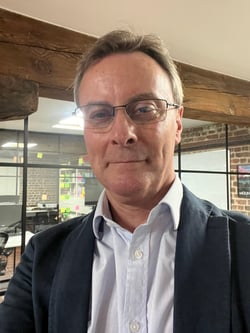Addressing the digital and data skills gap to deliver enduring transformation
Public services are under the cosh with departments and agencies facing
constrained budgets, but with the same number of priorities to deliver.
Digital technology is crucial to alleviating at least some of these issues. In
particular, cloud technologies allow public sector organisations to un-silo their data, and build and maintain high-quality digital services at markedly reduced costs compared with the "old ways" of big IT.
But this stuff is very easy to say and much harder to actually do. It's hard to un-silo data when it's locked away in legacy systems or build new digital services or features on top of existing services with no APIs, with no easy way to turn off.
It leaves public sector organisations beholden to whichever "traditional supplier" (to put it generously) built it because they're the only ones that can easily access it - if the specific people that worked on it are still around, that is. As a result, too many public sector organisations are stuck with poor services providing poor value for money.
To solve these problems we ideally want digital, data and technology (DDaT) skills embedded in every service team. But as we all know, these skills are frustratingly hard to come by. Churn in key digital roles has been reported to be as high as 40% in some government departments. And where DDaT skills are available, they're often air-dropped in at sky-high day rates.
Too often, we see skills as finite resources – tools you take out of the toolbox while scratching an item off the checklist. I think it's much more useful to think of skills as learned behaviours with fuzzy boundaries. And I think we underrate the importance of acquiring new skills, which is a skill in itself.
I've been lucky in my decades in government to see first hand the impact that
polyglot engineers can make on a transformation project. If you're not familiar with the term, these are usually explained as engineers with knowledge of more than one platform or programming language.
But actually, I think it's more useful to adopt the mindset of "no technology in
particular", and cultivate a beginner's mindset to each technology challenge.
Linguistics has a word for this already: hyperpolyglot. We like to think of them as nature's problem-solvers.
It's this approach that we've seen success in unpicking the mysteries of arcane and archaic public sector IT monoliths. These are problems which, if approached with a skills-matching approach, would never be solved; forever finding square pegs for seemingly impossibly-shaped holes.
These skills can be made as well as found. At Made Tech, we've had great success in nurturing new engineering talent through our academy programme. Getting positive feedback from clients about the impact they're having is one of the best parts of my job. And let's not be too embarrassed to say that having teams of mixed experience levels helps keep costs manageable, while having the invaluable side-effect of nurturing skills while the work is done.
But nurturing engineering talent takes time. There's the old adage: the best time to plant a tree was 20 years ago. The second best time is now. Luckily it doesn't take 20 years to introduce someone to a digital, data or technology career, but you can never start soon enough.
That's not to say every organisation or technology supplier needs an accredited academy programme. But I think organisations everywhere can benefit from taking a more academy-like approach to nurturing skills. Of course, it's not just those at the bottom of the ladder. We should all stay open to learning at every stage of our career, and this applies to both sides of the client-supplier equation.
Recruitment and formal training are not the only way to bring skills into public sector orgs. Working with the right suppliers can leave your teams more equipped with DDaT skills than when you started. They can also help you understand where you are on your DDaT skills journey, and take an informed approach for the way forward. It doesn't have to take long.
For any transformation, it's essential to put user needs at the forefront. And the commercial reality means meeting those needs as efficiently as possible. And that means demystifying digital transformation as a phrase and a concept, and looking at what that actually means for each organisation and each service. Sometimes it will mean modernisation rather than wholesale replacement with a rush to the newest shiniest technology.
To find that value we must build the capability to do so. It's not easy. It'll take
concerted time and effort from all of us in the public sector digital community. But it's the only way we'll achieve enduring and sustainable change.







